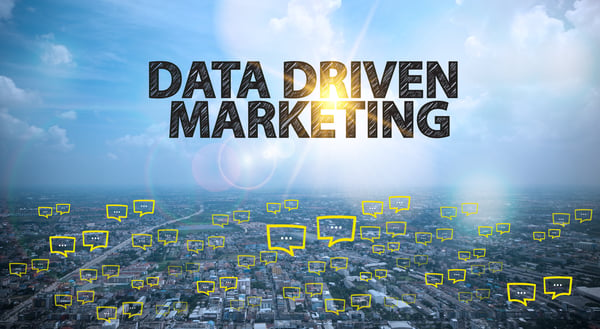Complex data analytics can substantially improve decision-making, minimize risks, and unearth valuable insights that would otherwise remain hidden. Consumers also benefit from improved service, better products, and enhanced quality of life.
It’s time to put this powerful transformative solution to work for you.

Where is your organization on the big data journey? How do you get where you want to go as you migrate to big data analytics and the Cloud? Nearly 80% of enterprise executives agree not embracing big data will cause them to lose their competitive edge. Those who do use big data today report overwhelming satisfaction with their results.
The choice is clear.
Big data can deliver significant value in a wide spectrum of strategic goals including new revenue generation, new market development, and enhanced customer experience. As Cloud computing continues to dominate the data environment in terms of infrastructure and/or data analytics services, it’s imperative for organizations everywhere to recognize how leveraging big data technologies is a powerful way to bring competitive advantage to the fore.
 Not that long ago, businesses manually gathered data, ran internal analytics as a batch process, and unpacked weekly or monthly what was hoped to be useful information for decision-making. Today, they rely on Cloud-based PaaS platforms and upgraded technology stacks like Apache Hadoop, Apache Hive, and Apache HBase or Apache Spark and/or Hadoop to enable them to better process and leverage big data* for growth and innovation.
Not that long ago, businesses manually gathered data, ran internal analytics as a batch process, and unpacked weekly or monthly what was hoped to be useful information for decision-making. Today, they rely on Cloud-based PaaS platforms and upgraded technology stacks like Apache Hadoop, Apache Hive, and Apache HBase or Apache Spark and/or Hadoop to enable them to better process and leverage big data* for growth and innovation.
The journey from Cloud discovery to data migration, data maturity, and data leadership is a demanding one, but the world-class solutions you gain along the way make it one well worth taking. Depending on who you talk to, there are anywhere from 3-10 “Vs” that make big data a huge business driver. These five are considered key:
The potential for data-driven value creation has always existed, but today that potential is much larger due to the volume of data available, Cloud infrastructure, and the new technologies designed to handle it.

The transformation to big data success relies on a big data strategy that identifies and capitalizes on opportunities. To foster a culture of data innovation*, organizations must learn how to assess their:
Closing the gap between business and IT is crucial to making the transformation successful because both areas of the organization should be focused on the same goals. To become a more data-driven organization, operational and cultural challenges like lack of trust around data’s use, the inability to strategically source data efficiently, and a non-existent enterprise data strategy must be overcome. Fortunately, these challenges are not insurmountable, but it's not a cakewalk either.
It’s now possible to collect, store, analyze, and reconfigure massive amounts of data that can be used to gain critical insights that deliver new business value and competitive advantage, but it’s estimated between 60-73 percent of all data within an enterprise goes unused for analytics. Whether it’s culture, poor data quality, or siloed and slow data, organizations must find a way to realize tangible and measurable value from the data they collect. Otherwise, the gap that exists between the value they currently derive and the potential value to be achieved will never be closed.
 Today’s big data ecosystem is large, complex, and redundant. Enterprises wanting to buy into a digital transformation are often confused when faced with a large number of decisions and too many layers in the technology stack. Even choosing from the Hadoop and Spark distribution layer can be complicated by solution providers that offer their own distributions. On the streaming side, Apache Flink, Apache Storm, and Apache Kafka vie for mindshare.
Today’s big data ecosystem is large, complex, and redundant. Enterprises wanting to buy into a digital transformation are often confused when faced with a large number of decisions and too many layers in the technology stack. Even choosing from the Hadoop and Spark distribution layer can be complicated by solution providers that offer their own distributions. On the streaming side, Apache Flink, Apache Storm, and Apache Kafka vie for mindshare.
Upgrading your organization’s technology stack from a traditional relational one to a Hadoop- and/or Spark-backed one allows you to incorporate massive amounts of structured and unstructured data and parallel processing that a traditional system just can’t handle.
Apache’s Hive, for instance, lets developers write code in an SQL-like manner that can convert queries to MapReduce jobs under the covers. Spark SQL offers powerful integration with the rest of the Spark ecosystem, giving developers access to familiar tools that provide a common way to quickly access a variety of data sources.
Other big data tools integral to the prompt and effective processing of large amounts of data include:
There are no set rules that guarantee success in harnessing big data. Each enterprise must find the best technologies that solve their particular use case(s), then provide the necessary staff training, and possibly hire a consulting firm to assist with the transformation. Whether it’s improved decision-making, entering new markets, or delivering better customer experiences, if you focus on what you want to gain from your data you’ll be less tempted to get sold by “shiny tech.”
No matter which big data solutions you choose, be sure to think future-ready so you can quickly and easily migrate if and when necessary.

Building a data-driven decision making (DDDM) culture* helps enterprises become more agile and nimble, more quickly identify new business opportunities, and respond to market fluctuations and changes ahead of the competition. When big data is used to make growth-related, customer service, and marketing and sales decisions, the financial results can be substantial.
Available technologies make creating a DDDM culture easier than ever. Changing corporate- and employee-level mindsets are far harder, but progress is being made. Traditional assumptions and gut decisions are slowly but surely being replaced by data-driven, fact-based decision-making that, in turn, has helped the cause of adopting big data solutions.
Enterprises that are familiar with analyzing internal data like sales and inventory are now also analyzing external data like social media to gain new insights into customer behavior, markets, and supply chains. Advanced technologies are helping them:
Both are key components to understanding what customers want and delivering solutions as quickly as possible.
T o gain the true value of data, you need to do more than merely “capture” it, and you need to unlock it and make it available to the entire enterprise. From AI to the basics of data preparation, how you mine data for information helps you maximize the value of data investments.
o gain the true value of data, you need to do more than merely “capture” it, and you need to unlock it and make it available to the entire enterprise. From AI to the basics of data preparation, how you mine data for information helps you maximize the value of data investments.
Challenges like multiple data formats, the complexity of IoT applications, and human error are more easily overcome when automation is used to manage big data. Data automation lets enterprises do more with less, and it can spearhead their digital transformation by delivering:
Touching everything from technology to corporate culture, automation has become integral to solving today’s business challenges while keeping an eye on future opportunities.
While automation isn’t new, it has greatly evolved in recent years. It offers new and exciting ways for organizations to drive digital transformation and free employees to focus on innovation and agility instead of manual, rote tasks.

Banking and financial services continue to be at the forefront of big data adoption while the inclusion of big data technology and services is gaining ground in the healthcare industry. The two industries produce enormous volumes of data, much of it subject to privacy and compliance regulations.
As the number of electronic records grows in the finance sector, financial services providers are actively using big data* to derive business insights, improve scalability, and enhance the services they provide their customers. Big data analytics enhances cybersecurity and reduces risks like fraud and identity theft.
A big problem for many financial organizations has been trying to collect, store, and analyze big data using outdated legacy systems and lack of access to the operational data stores that they currently possess. New technologies like advanced automation are helping them realize significant cost savings, leverage data for competitive advantage, and reduce the risk of failure by eliminating the human factor from up to 30% of daily tasks.
For the healthcare sector, the goal is to become more efficient, accessible, and better equipped to customize treatment protocols. Big data analytics allows healthcare organizations to collaborate and derive business value from disparate data. But there have been many obstacles to getting there.
Electronic health records have been a healthcare sector staple for quite a while, but their usefulness is limited to a patient’s medical history. In stark contrast, big data can deliver a comprehensive, holistic data analysis that helps medical providers not only improve their profitability but greatly improves the care patients receive.
For instance, providers are using big data to develop algorithms that predict infections 24 hours before physical symptoms appear. The sky is truly the limit for what big data can do in the healthcare industry.** Proponents tout benefits like pandemic prediction, reduced cost of treatment, and advanced mobile health applications which even now are growing at a staggering annual rate.
 Real-time data offers enormous business benefits and has become the number one way for enterprises to create a competitive edge. Big data and Cloud technologies now make it easier to collect disparate data and use it for competitive strategies like hyper-personalization, location-based ad targeting, and real-time insights. Just a few of the ways big data is being used to compete include:
Real-time data offers enormous business benefits and has become the number one way for enterprises to create a competitive edge. Big data and Cloud technologies now make it easier to collect disparate data and use it for competitive strategies like hyper-personalization, location-based ad targeting, and real-time insights. Just a few of the ways big data is being used to compete include:
Armed with the right tools, your organization can get immediate, meaningful, actionable insights that make it more agile, more productive, and more competitive.

For more than 15 years, Sygma Technology has been providing top-tier, innovative software solutions to government agencies and Fortune 500 businesses across a diverse range of industries. We offer:
Depending on your organization’s needs, we use big data technologies like Drill, Flink, Hive, Hadoop, Kafka, and/or Spark and can build sophisticated data pipelines and/or data lakes with those technologies and combine with custom software on Azure, AWS, and the Google Cloud Platform to process and analyze your big data faster and gain insights that enable and foster innovation. Each of these Cloud-provider technologies provides a personalized multichannel experience that assists enterprises looking to dive into big data.
We make it happen through our extensive experience in:
Organizations we’ve partnered with are leaders in the transportation, communications, and financial sectors. We’re proud to have played a role in helping these and other forward-thinking organizations open the door to their digital transformations and gaining a competitive advantage or saving money.
Ready to tap into the full potential of big data to create a lasting competitive edge? Get in touch with us today to learn more.
Meet with a Sygma Technology software consultant. The goal of this call is to provide the following: